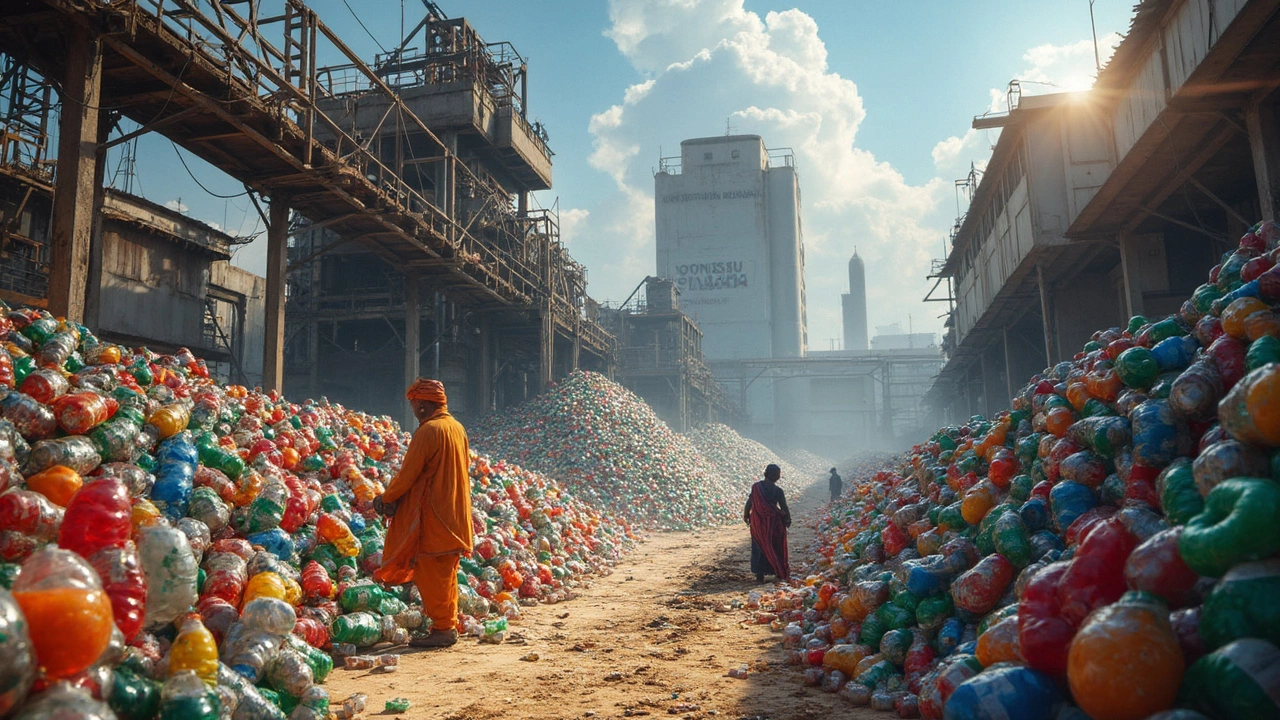Plastic Bottles: What’s Behind the Everyday Container
Ever wonder why a cheap plastic bottle feels so light yet holds up under pressure? It’s all about the mix of polymer chemistry, molding tricks, and huge demand from food, pharma, and personal care markets. In India, the bottle market grows faster than most because more people buy bottled water, soft drinks, and medicines every day.
When you pick up a bottle, you’re holding a product that took millions of tiny polymer beads, melted them, and forced the molten plastic into a mold in just seconds. The whole process runs on high‑speed injection molding machines that can produce thousands of bottles per minute. That speed keeps prices low, which is why even rural towns see plastic bottles on every shop shelf.
How Plastic Bottles Are Made in India
Most Indian bottle factories use PET – polyethylene terephthalate – because it’s clear, strong, and cheap. The steps are simple: first, plastic pellets are dried to remove moisture; then they’re melted inside a screw extruder. The hot melt is shot into a pre‑shaped mold where it cools and solidifies in a flash. After cooling, an automatic robot trims off excess flash and checks each bottle for shape and strength.
Factories in Gujarat and Maharashtra dominate the scene thanks to easy access to raw material suppliers and ports for export. These plants invest in energy‑efficient machines that cut electricity use by up to 20 % compared with older equipment. The result? Lower production costs and a smaller carbon footprint per bottle.
Recycling and Making Plastic Bottles Sustainable
Recycling is the real game‑changer for the plastic bottle industry. In India, the recycling rate for PET bottles hovers around 60 %, thanks to a network of informal collectors who pick up discarded bottles from streets and markets. The collected bottles are then sorted, cleaned, and shredded into flakes that can be melted again into new bottles or other products like fibers for clothing.
If you’re a business, using recycled PET (rPET) can boost your brand’s green image while saving money on raw material costs. Many big beverage brands now blend up to 30 % rPET into their bottles without compromising quality. On the consumer side, simply rinsing a bottle before tossing it into a recycling bin makes a huge difference – it reduces contamination and increases the chance the bottle will be turned into a new product.
Beyond recycling, designers are experimenting with lighter bottle walls and alternative materials like bio‑based plastics that break down faster in the environment. Lighter bottles mean less plastic per unit, and bio‑plastics can be sourced from crops like sugarcane, cutting down reliance on fossil fuels.
For anyone interested in the future of packaging, keep an eye on government regulations that push for higher recycled content and ban single‑use plastics in certain categories. These rules are nudging manufacturers to innovate faster and adopt circular economy practices.
In short, plastic bottles are a massive part of everyday life, but they’re also a huge opportunity for improvement. Whether you’re a producer looking to upgrade machines, a brand aiming for greener packaging, or a consumer wanting to recycle right, there’s a practical step you can take today to make the plastic bottle cycle more efficient and less wasteful.

Which Company Produces the Most Plastic Bottles?
Plastic bottles are everywhere, but have you ever wondered which company is behind the bulk of this global production? This article dives into the giants of the plastic bottle industry. Learn about the scale of their production, the environmental impact, and what they are doing—or not doing—to manage plastic waste better. Get ready for some surprising insights and practical tips on how to reduce your plastic footprint.
